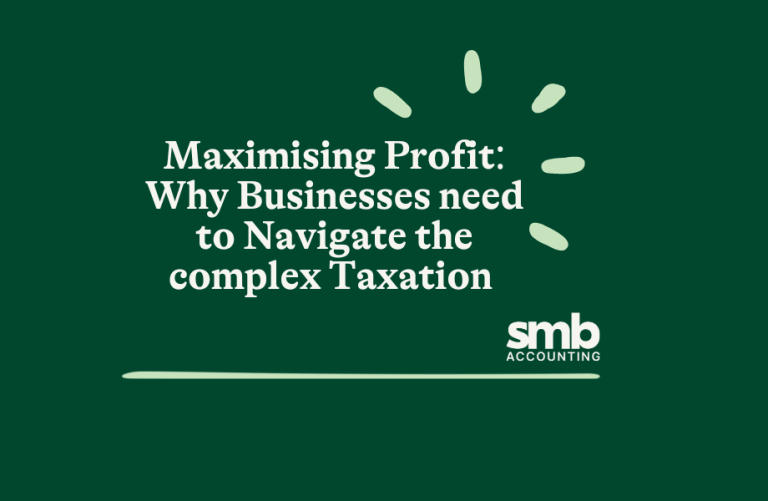Maintaining a firm grasp on your small business’s financial health is essential for driving growth, making informed decisions, and ultimately ensuring long-term success. An in-depth understanding of the critical financial metrics that matter most to your business can provide valuable insights into your financial position, areas for improvement, and growth opportunities. In this guide, we will explore the essential financial metrics every small business owner should track, discuss their significance and offer practical tips on monitoring and utilising these key performance indicators (KPIs) effectively.
As a small business owner, keeping your finger on the pulse of your venture’s finances involves more than merely tracking income and expenses; it requires a comprehensive understanding of various financial metrics that offer a holistic view of your business’s performance. These metrics, which encompass aspects like profitability, liquidity, and efficiency, can help you identify and address potential issues, optimise your financial management, and foster sustainable growth.
Some of the most critical financial metrics for small business success include gross profit margin, net profit margin, current ratio, quick ratio, return on investment (ROI), and accounts receivable turnover. By regularly monitoring these KPIs, you can gain valuable insights into your business’s financial strengths and weaknesses, leading to more effective decision-making and strategic planning.
However, merely tracking these financial metrics is not enough. It’s crucial to understand the nuances of each metric, how they interconnect, and how they can inform your long-term business strategy. Additionally, leveraging technology, such as accounting software like Xero, can streamline this process, providing real-time data and enabling you to make data-driven decisions with confidence.
1. Assessing Profitability: Gross Profit Margin and Net Profit Margin
Two essential financial metrics for gauging your small business’s profitability are gross profit margin and net profit margin. Understanding these metrics can help you assess your business’s ability to generate profits and identify areas where cost reduction or revenue growth may be necessary.
– Gross Profit Margin: This metric measures the proportion of revenue that remains after accounting for the cost of goods sold (COGS). A higher gross profit margin indicates that your business is generating more profits from its sales, while a lower margin may signal the need to reduce costs or increase revenue. To calculate your gross profit margin, subtract your COGS from your total revenue and then divide the result by your total revenue. Multiply the result by 100 to express the margin as a percentage.
– Net Profit Margin: This metric provides a more comprehensive view of your business’s profitability, taking into account not only COGS but also operating expenses, taxes, and interest. To calculate your net profit margin, subtract your total expenses (including COGS, operating expenses, taxes, and interest) from your total revenue, then divide the result by your total revenue. Multiply the result by 100 to express the margin as a percentage.
Regularly monitoring and analysing these profitability metrics can help you identify trends and make strategic changes to improve your small business’s financial performance.
2. Evaluating Liquidity: Current Ratio and Quick Ratio
Liquidity refers to your small business’s ability to meet short-term financial obligations, such as paying bills, covering payroll, and servicing debt. Two key liquidity metrics — the current ratio and the quick ratio — can help you assess your business’s financial stability and ensure that you have sufficient cash flow to navigate unexpected challenges or seize growth opportunities.
– Current Ratio: This metric compares your business’s current assets (cash, accounts receivable, and inventory) to its current liabilities (accounts payable, short-term debt, and taxes). A higher current ratio indicates a greater ability to meet short-term obligations, while a lower ratio may signify financial strain. To calculate your current ratio, divide your total current assets by your total current liabilities.
– Quick Ratio: Also known as the acid-test ratio, the quick ratio provides a more conservative assessment of your business’s liquidity by excluding inventory from the calculation. Like the current ratio, a higher quick ratio signals a greater ability to meet short-term obligations, while a lower ratio may indicate potential financial difficulties. To calculate your quick ratio, add your cash and accounts receivable together and then divide the sum by your total current liabilities.
Monitoring these liquidity metrics regularly can help you identify and address cash flow issues proactively, ensuring your small business remains financially resilient in the face of challenges.
3. Gauging Efficiency: Return on Investment and Accounts Receivable Turnover
Efficiency metrics help you evaluate how effectively your small business is utilising its resources to generate profits and manage cash flow. Key efficiency metrics include return on investment (ROI) and accounts receivable turnover.
– Return on Investment (ROI): This metric measures the profitability of an investment or expenditure relative to its cost. A higher ROI indicates more significant returns on investment, while a lower ROI may signal an underperforming investment or expenditure. To calculate your ROI, subtract the cost of an investment from its revenue, then divide the result by the cost of the investment. Multiply the result by 100 to express the ROI as a percentage.
– Accounts Receivable Turnover: This metric measures your small business’s ability to collect payments from customers. A higher accounts receivable turnover indicates more effective credit and collections practices, while a lower turnover may signify potential cash flow issues. To calculate your accounts receivable turnover, divide your total net credit sales (excluding cash sales) by your average accounts receivable balance.
By tracking these efficiency metrics, you can identify areas for improvement in resource allocation and cash flow management, refining your business processes for greater success.
Harnessing Financial Metrics for Small Business Success
Mastering the essential financial metrics discussed in this guide is crucial for driving growth, making informed decisions, and ensuring the long-term success of your small business. By closely monitoring these key performance indicators, you can identify trends, strengths, and weaknesses in your business’s financial performance, enabling you to make strategic adjustments and optimise your financial management practices.
At SMB Accounting, our tax professional is dedicated to helping small business owners understand and leverage crucial financial metrics for lasting success. Our tailored accounting and advisory services can provide you with the guidance, tools, and insights necessary to navigate the complexities of small business finance confidently. Contact us today to learn more about how we can help your small business achieve its full potential.




